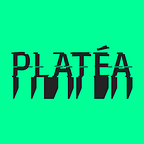Global CX and Consumer Trends. Shaping the Future of Human Experiences
Recent years have been unprecedented in terms of disrupting and totally unpredictable changes, affecting every possible aspect of our lives. Having to deal with Covid pandemic, war in Ukraine and global cost-of-living crisis on one hand, and deep digitalization, rise of AI and empowerment of new values like sustainability and diversity on the other hand, we see these factors framing our lives, environment and behavior. Correspondingly, products and services we are using evolve in their turn too, making our customer experience change.
Today we try our best to make it through high-turbulence time and adjust to new reality, so let’s have a look at some of the most prominent trends and patterns in customer experience and consumer behavior that will be framing our environment during the following years.
Digitalization & Metaverse
As digital technologies never stop evolving, AI and robots become a part of our daily routines and interactions. New “phygital” (physical + digital) experiences have become common in retail, healthcare, entertainment, and many other domains.
Retail in particular benefits from all types of robotized touchpoints, starting from robots acting as floor assistants and ending with autonomous delivery.
Another big focus is on Web3 technologies, including NFT, crypto assets, and Metaverse experiences. As these concepts become more prevalent, brands offer more and more related services like NFT education, digital asset management, and branded Metaverse experiences.
Digital assets are now being used as traditional tangible assets — consumers can rent NFT, give them as gifts or even purchase as a form of art.
Metaverse becomes an alternative space for both leisure and self-development, allowing consumers to “try on” experiences from the physical environment in every domain, from gaming and fashion to healthcare and education. Retail brands start actively experimenting with the new environment, creating their dedicated Metaverse spaces (for example, Nike has created their branded Metaverse playground).
Diversity & Inclusion
Diversity, equity, and inclusion (DEI becomes a new philosophy, and we can see brands reacting to that and highlighting freedom of choice, self-expression, and being different.
DEI becomes not only a personal choice, but also a new strategy in professional environment, forging new hiring strategies (like unbiased resume-free hiring) and triggering female equality campaigns.
New gender and body neutrality concepts focus on promoting equality-focused behaviors and address associated challenges, like unrealistic model-body stereotypes or gender dysphoria issues.
Industries start putting more emphasis on inclusion and accessibility, adapting their products and services to the pain points and needs of people with disabilities, either mental or physical.
Sustainability
As climate change issues progress, sustainability, and smart consumption become a new must in many aspects of life, making brands come out with new operating modes to ensure eco-friendly processes.
This becomes particularly relevant for e-commerce businesses, putting in place new options for sustainable packaging and delivery, allowing their customers to make their contribution to the ecosystem.
Alternative raw materials and production processes become more widely used to substitute harmful and unecological solutions. Thus, carbon-negative materials and concepts are one of the new alternatives allowing to reduce the negative impact on the environment. Algae, banana fiber, and bamboo are widespread as alternative raw materials for food, clothing, and footwear. This results in evolution in not only production processes, but also people’s shopping behavior and food habits, promoting a zero-waste approach, waste reduction, and healthy consumption.
Immersive Shopping
Shopping environments and routines undergo drastic changes as a response to the new reality. Customers seek more immersive shopping experiences, and brands react to that by creating multi-sensory touchpoints and blending customer experience into a unique phygital (physical + digital) journey, on both emotional and operational level.
Healthcare
Healthcare routines and approaches significantly evolve for both mental and physical health.
Mental health becomes a new focus, supported by a wide variety of tools and ways to stay mindful — from anxiety-controlling apps to virtual reality meditations. Digital detox gets particularly highlighted as the new way to change life habits from mindless to mindful.
New high-tech routines appear, supported by technology, to assist in tracking vital life factors, enable telemedicine solutions, and promote a more conscious approach to healthcare.
New Ways of Living
New technologies, shopping experiences, and services trigger massive changes in people’s behavioral patterns and ways of living. Work-life balance and prevention of burn-out are brought to the spotlight by numerous brands and service providers offering tools and solutions to support it.
Changes also occur to age-related or family-composition-related concepts. Elderly age is no longer considered a limitation — modern technology and healthcare routines combine to promote longevity and prolong active years.
Pets begin to take up more space in consumers’ lives, routines, and budget. Boosted by pandemic and spending more time at home, pet-owners now spend more on luxury treats and products for pets.
To summarize,
Most of these trends are focusing on:
- Convenience (saving consumer’s time and effort)
- Smart consumption (saving ecological assets, health, money, etc.)
- Freedom of choice as life-long philosophy
It can become a juggling challenge for brands to combine these concepts in the customer experiences they create, but those who manage become market disruptors and love-marks.
Watch this as a lecture on our Youtube channel
Resources & materials:
